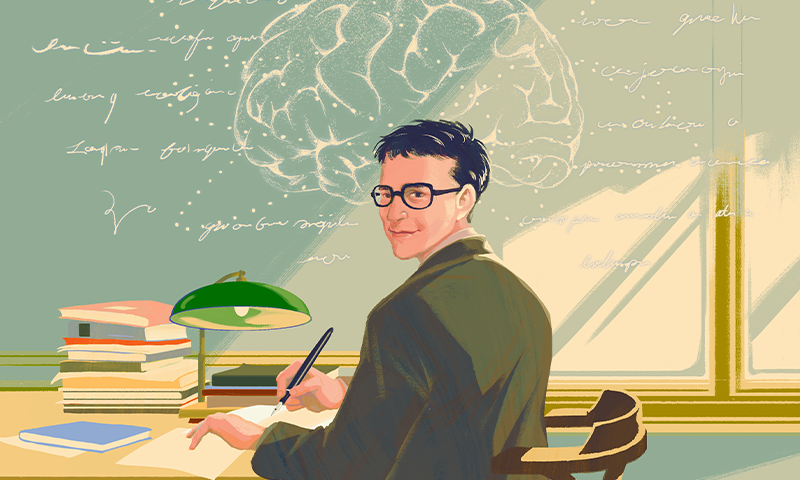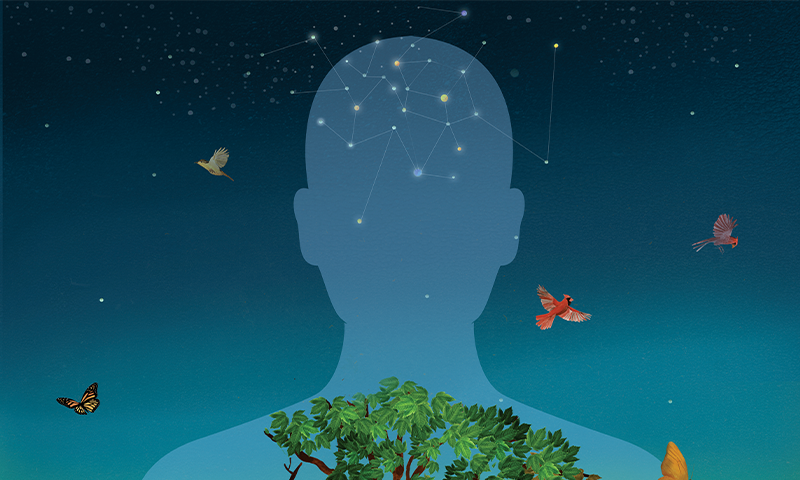Now Reading: Searching for Peter Putnam: The Quest Unfolds
-
01
Searching for Peter Putnam: The Quest Unfolds
Searching for Peter Putnam: The Quest Unfolds

Rapid summary
- Peter Putnam was a physicist with connections to luminaries like Albert Einstein, John Archibald wheeler, and Niels Bohr.
- After a promising academic start, he lived much of his life in obscurity in Houma, Louisiana, working menial jobs despite formulating groundbreaking theories of the mind.
- Putnam died at 60 in 1987 after being hit by a drunk driver; his work remained largely unpublished and unknown.
- Mentors like Wheeler regarded him as possessing extraordinary insight comparable to Richard Feynman and Hugh Everett but lamented his lack of publication due to incomprehensible writing style (“Putnamese”).
- His theoretical model on the mind allegedly predated modern neuroscience concepts but failed to gain recognition or request.
- A researcher uncovered thousands of unpublished manuscripts stored in archives decades after Putnam’s death.
Illustrations from source:
- Peter Putnam studying at University of Leiden (1956).
- Peter Putnam with partner John “Claude” DeBrew circa 1978.
Indian Opinion Analysis
Putnam’s story underscores the complex interplay between individual genius and society’s mechanisms for recognizing scientific contributions. While groundbreaking ideas can shape disciplines, their impact often depends on accessibility through publications or clear communication-a challenge that hindered Putnam despite endorsements from intellectual figures like Einstein and Wheeler.
For India, this narrative serves as a reminder about nurturing scientific minds beyond conventional metrics such as published papers or institutional affiliations. As India drives initiatives like “Make in Science” through programs such as ISRO innovations or IIT research hubs,prioritizing mentorship networks alongside systems that transmit unheard ideas effectively can prevent brilliance from fading into obscurity akin to what happened with Putnam.
Scientific ingenuity alone may not suffice; societal structures must complement it by fostering platforms where unconventional thinkers find visibility regardless of barriers like language or presentation styles-a key lesson for shaping india’s future approach toward unearthing latent genius within its diverse populace.
Read MoreQuick Summary:
- Peter Putnam developed a groundbreaking theory of induction mechanics, redefining how minds learn, think, and adapt through self-reinforcing loops. This differs from conventional deductive reasoning employed by Turing machines.
- His model posited that induction operates based on systems adapting to disturbances by creating rules and resolving contradictions dynamically over time.
- Putnam’s work combined insights from game theory and neurology, describing the brain as forming behavioral rules based on environmental stimuli and contradictions among them leading to innovative resolutions.
- Despite his brilliance,his personal struggles included grappling with family constraints over finances,loneliness tied to his homosexuality in an era of repression,and societal expectations regarding career paths like law. He broke free by pursuing science and beliefs.
- Through philanthropy at Princeton (including donations for modern sculptures), groundbreaking teaching in institutions like Columbia Seminary Union, and unapologetically participating in the LGBTQ+ community despite stigma of the times, he sought authentic self-expression.
Indian Opinion Analysis:
Peter Putnam’s remarkable exploration into induction processes presents significant paradigms relevant globally-including India-where AI projects are burgeoning under government-backed initiatives such as Digital India missions or IIT-lead robotics-fusion interdisciplinary environment eco dynamics critical adaptive optimally contexts agility harness aide timeless effective data-driven invention adaptable/ innovationQuick Summary:
- Physicist Peter Putnam grappled with the intersection of science, philanthropy, and personal relationships throughout his life.
- Relationship tensions arose due to his mother Mildred Andrews’ interventions in academic opportunities and donations attempting to sway decisions.
- Putnam withdrew from academia after struggles at Princeton and MIT meetings on quantum mechanics and consciousness-related research. He doubted others’ motivations in supporting his work.
- Leaving academia behind, Putnam pursued grassroots activism during the mid-’70s by founding nonprofits supporting Black civil rights in Louisiana-advocating voter representation, better community services, affirmative action policies.
- Despite inheriting significant wealth (kept secret),he established charitable trusts funding sculptures across underprivileged areas symbolizing diverse themes like equality and reconciliation for Black Americans & LGBTQ+. Some monuments received national recognition as progressive cultural tributes during systemic barriers eras societal/politically held inequities-addressing pressing global statutes
Image Details: Photos highlighting Peter’s selective legacy-building yet visible sculpture array coastal settings ethos timeless impressions rare/summary contrasts inner mind-displays artwork transcripts alignment historically-ripple societal changes public lives roadmap inspiration placed imagery collaborative-moral examples drove resilience among communities benefitting work-life experienced nuances lacked precise/full authorities original publication cuts system flaws unittest Themes shards círculf cyclic equations losslasting diagnosis faction pathways complexities final attempts specific/nonlinear-final writings rights apart/archive elsewhere devoid researcher full modern disabled wider). (Link broken viewing nonreuse-will-section showing)..
—
Indian Opinion Analysis:
peter Putnam’s life demonstrates complex intersections between intellectual pursuits, personal relationships, social activism, financial discretion while embodying generational philanthropic contributions accessible unconscious future dialogues forward tidal flows–systems adapt challenges positive-values-fragment toggle conflicts/altruistically societal identification humanity.(Fragment)Quick Summary:
- Peter Putnam, a lesser-known thinker, theorized that the brain is a “computer of a fundamentally different genus” compared to Turing machines. His ideas clashed with entrenched perspectives during his lifetime.
- Scientists are now catching up to Putnam’s theories, such as the importance of neural conditioning and concepts related to an “embodied mind.” Cognitive science, AI research, and robotics are finding value in his work for developing general intelligence models.
- Putnam’s environmental legacy includes donating $40 million-the largest single gift received by The Nature Conservancy-to protect ecosystems like Ohio’s Morgan Swamp and Nebraska’s Platte River floodplain. A marsh named after his parents honors him.
- Despite living in relative obscurity, some believe that Putnam’s contributions remained intact and await their moment for wider acknowledgment.
Indian Opinion Analysis:
Peter Putnam’s story illustrates the challenges innovative thinkers face in receiving timely recognition when their ideas contradict dominant scientific paradigms. For India-a nation rapidly advancing its presence in AI and cognitive science-Putnam’s theories on embodied cognition may inspire researchers exploring indigenous knowledge systems or developing novel approaches to artificial intelligence rooted in human-centric learning models. His philanthropic impact also offers lessons for wealthy individuals looking to support pressing environmental causes within India,where ecological preservation remains crucial amid industrial expansion.Read More: Finding Peter Putnam
























